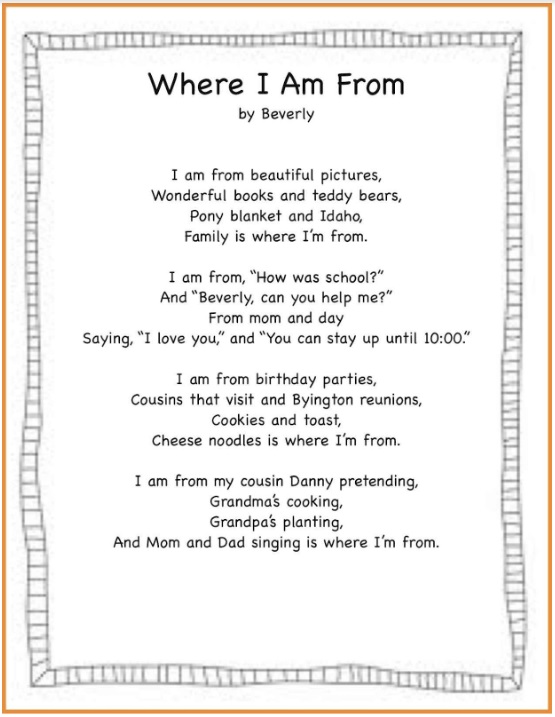Introduction
This activity was designed to facilitate introspection and discussion about personal identity and Jewish identity and the relationship between the two.
In this lesson, students will create and share their own “I Am” poem. Next, students will have an engaging discussion centered on identity. To complete the lesson, students will part take in a fun art activity.
This lesson was created by The Israel Forever Foundation. View the original lesson here.
Learning Objectives
- Identify various factors that shape their identity
- Students will understand the elements that make up their own Jewish identities
Procedure
1. Show students an example of an “I Am” poem – a style of poetry that delineates the various aspects of the poet’s identity.
a. Method
b. Sample
I Am
I am (two special characteristics)
I wonder (something you are actually curious about)
I hear (an imaginary sound)
I see (an imaginary sight)
I want (an actual desire)
I am (the first line of the poem restated)
I pretend (something you actually pretend to do)
I feel (a feeling about something imaginary)
I touch (an imaginary touch)
I worry (something that really bothers you)
I cry (something that makes you very sad)
I am (the first line of the poem repeated)
I understand (something you know is true)
I say (something you believe in)
I dream (something you actually dream about)
I try (something you really make an effort about)
I hope (something you actually hope for)
I am (the first line of the poem repeated)
2. Have students write their own “I Am” poem, exploring different pieces of their identity.

3. Invite students to share their poems with the class, or break the class into smaller groups and have everyone read their poem within the smaller group.
4. Start an open discussion (in either format – full class, or smaller groups) using the following questions:
a. Did you find it easy to write your I am poem?
b. Which aspects of your identity, are strongest in this poetic reflection of yourself?
c. What characteristics, if any, did you NOT choose to include in this personal portrait?
d. Which aspects of your identity, if any, are based on freedom? Any drawn from experiences of oppression?
e. How do you think I am poems of other Jews – in the world, or in history – would be different from yours?
f. What might be unique about an I Am poem written by a Soviet Jew? Would that poem be any different for a Soviet Jew living in Israel or in the Diaspora?
g. What does writing this poem teach you about yourself?
5. Follow-up art activity: Have the group make an art piece (drawing, painting, collage…) to accompany your “I Am” poem. Be sure to include not only an image of yourself, but also to incorporate the aspects of your identity which you have underlined in the poem.